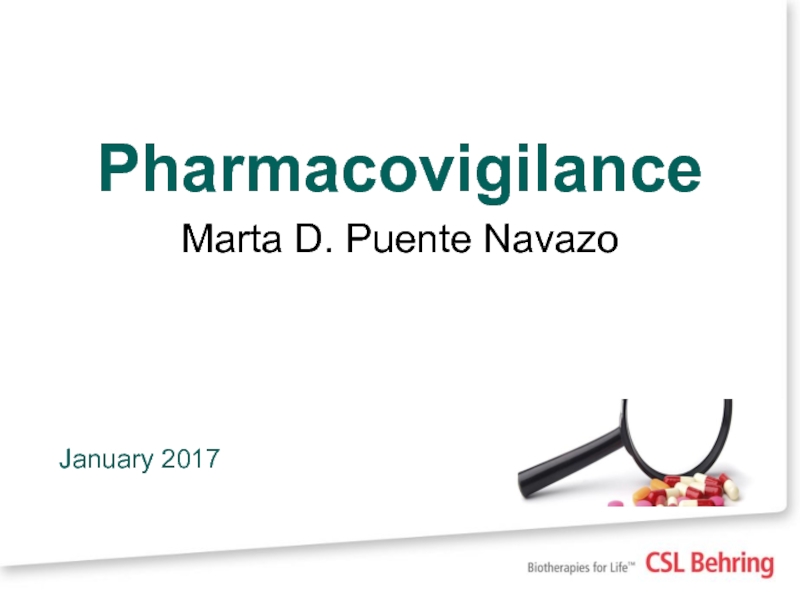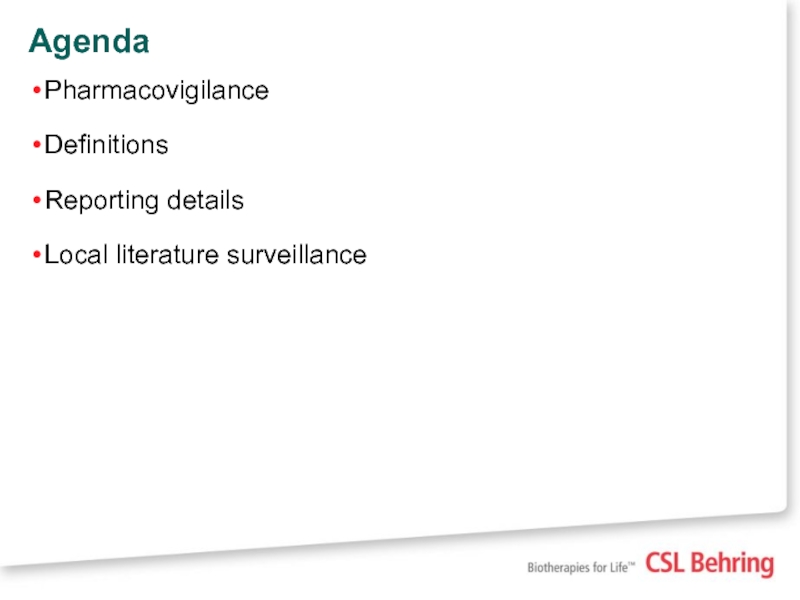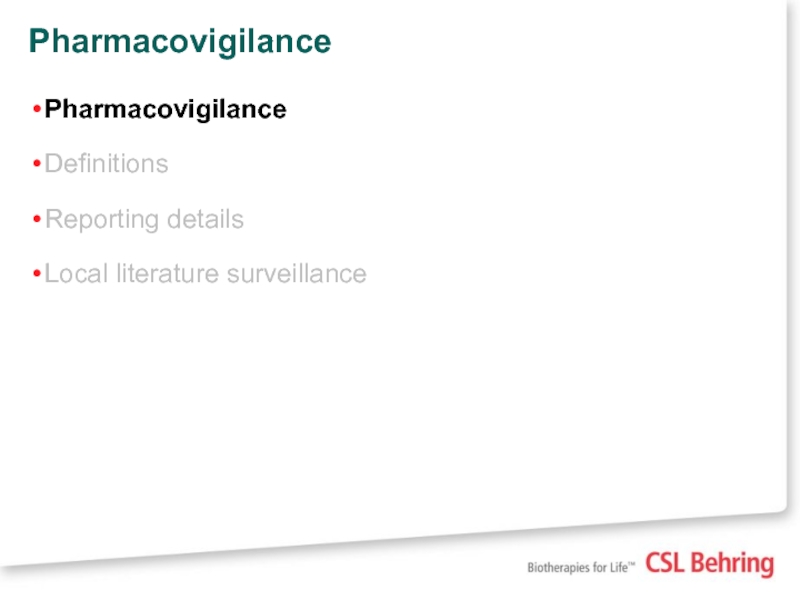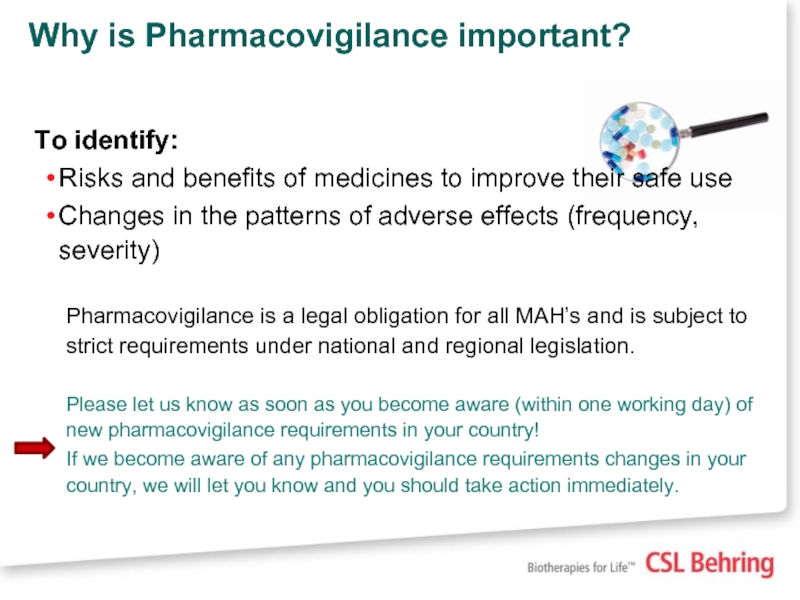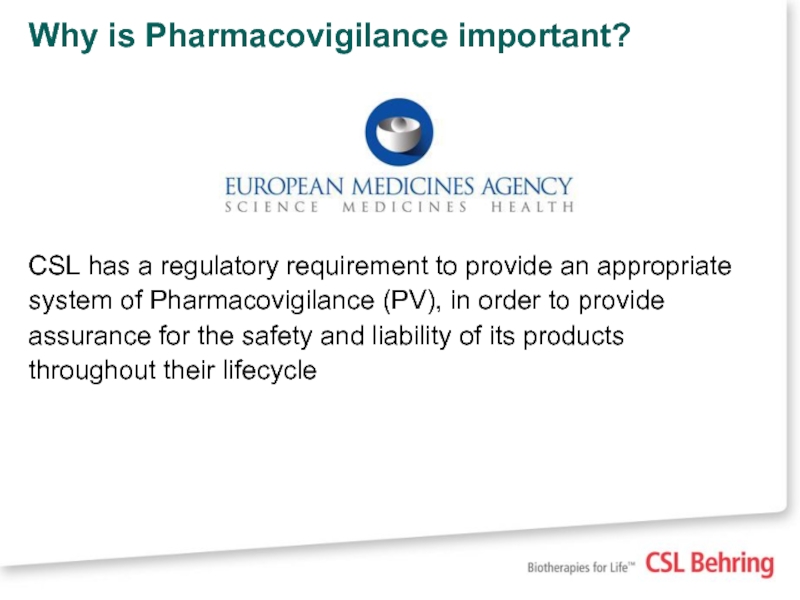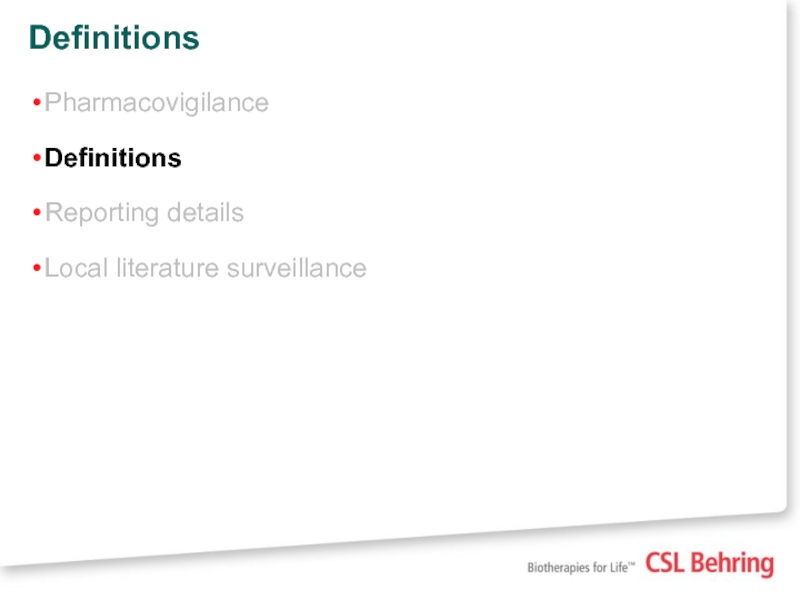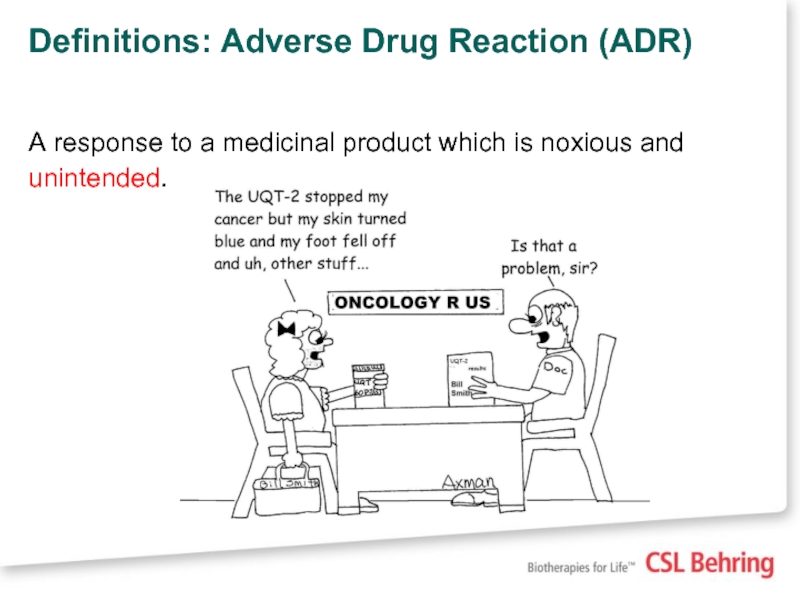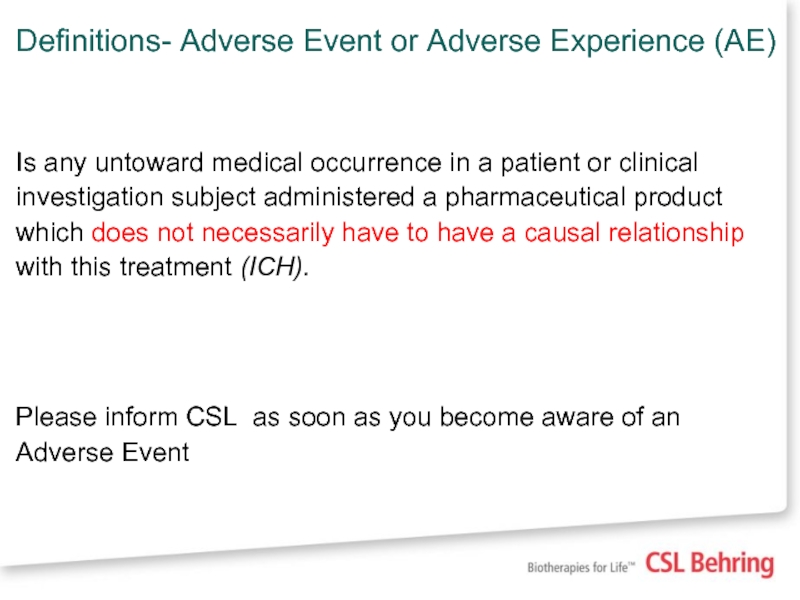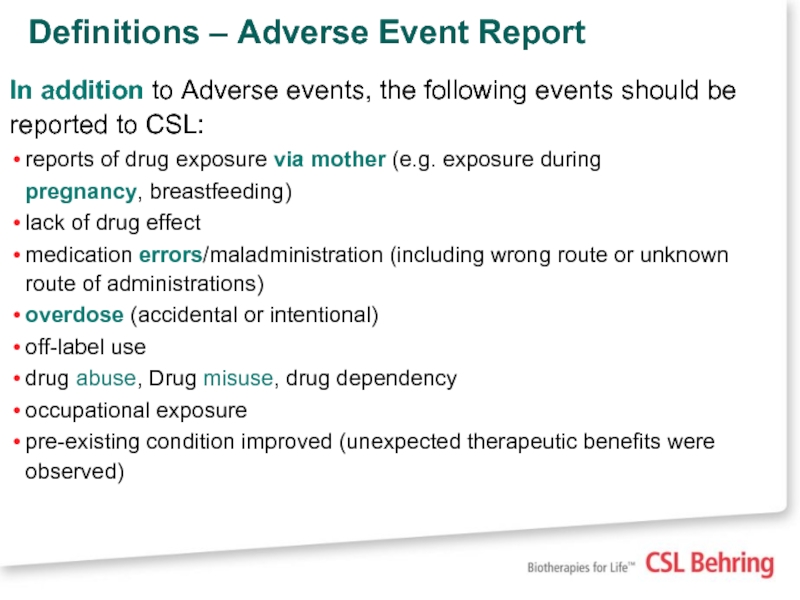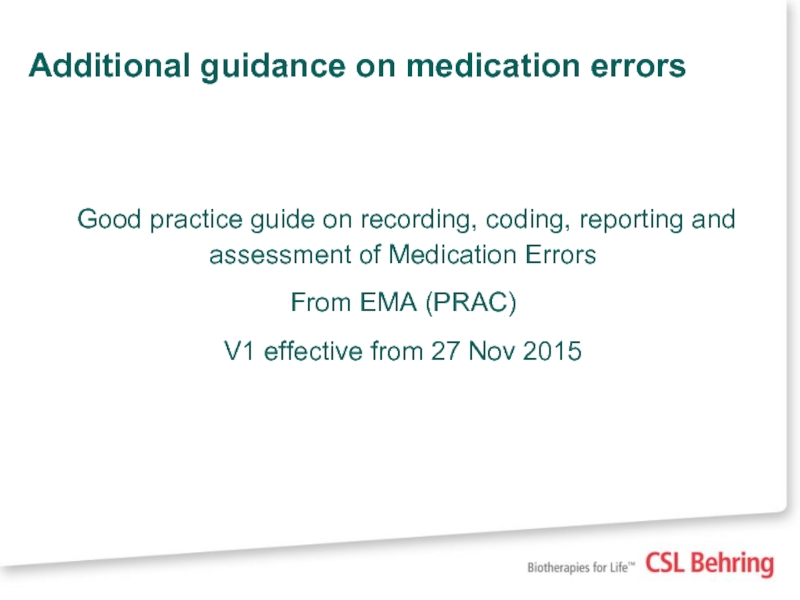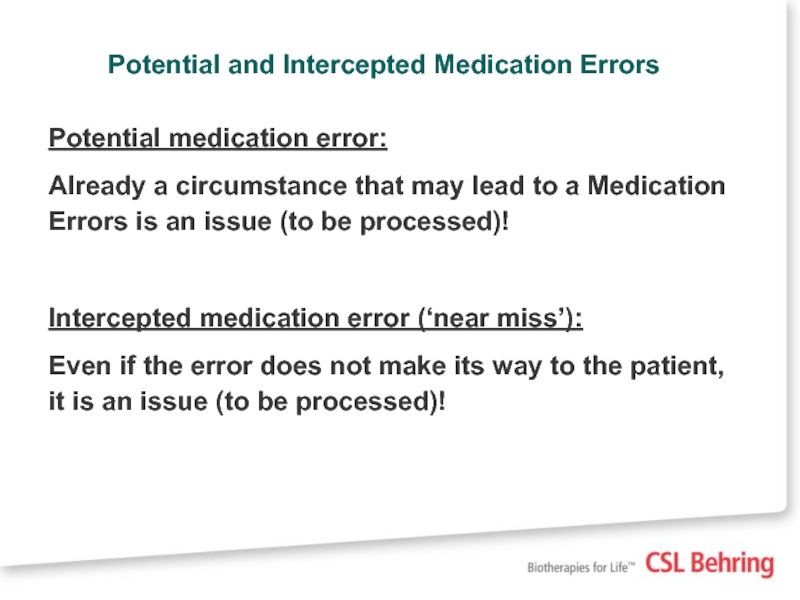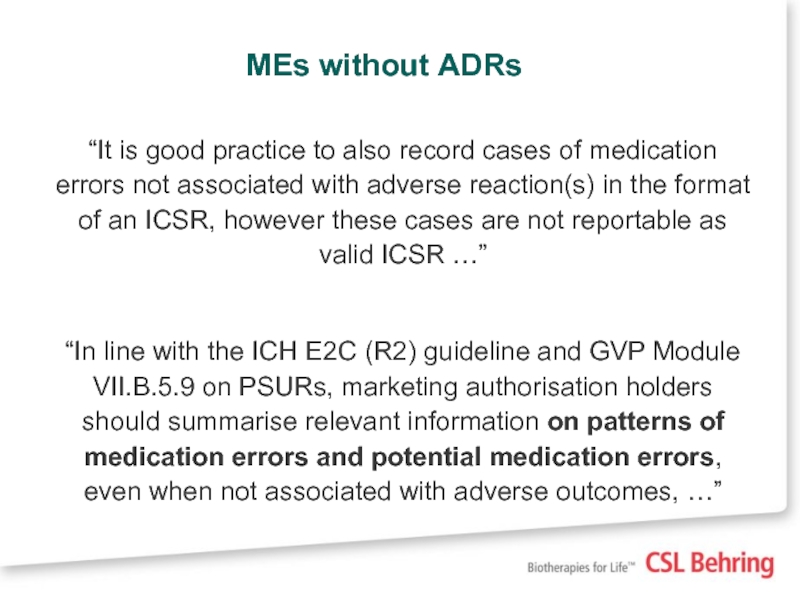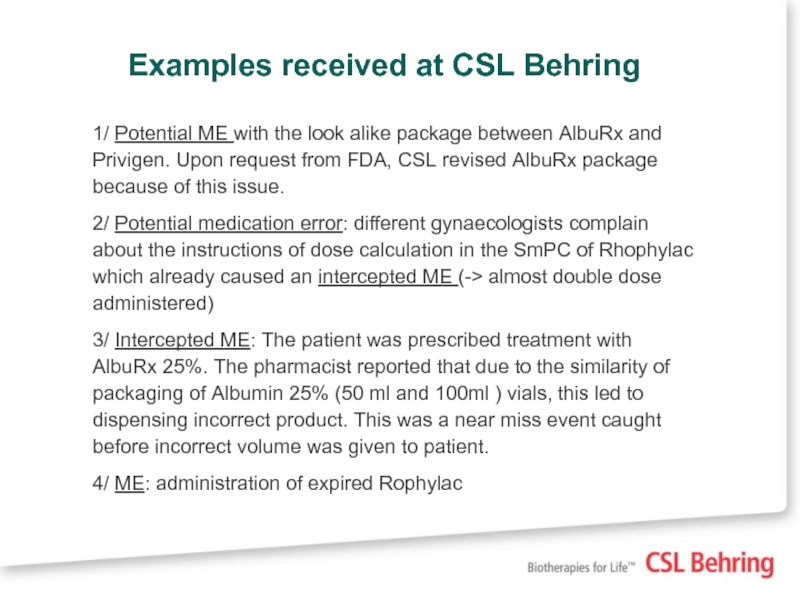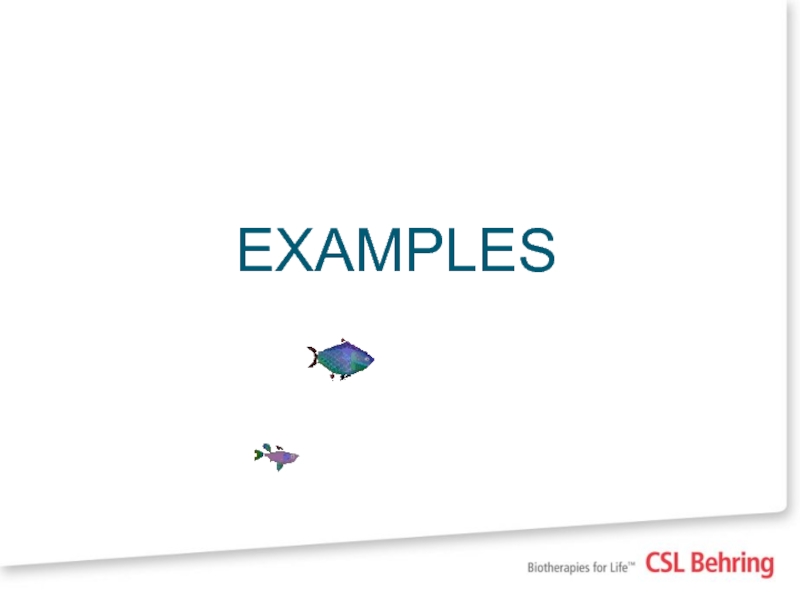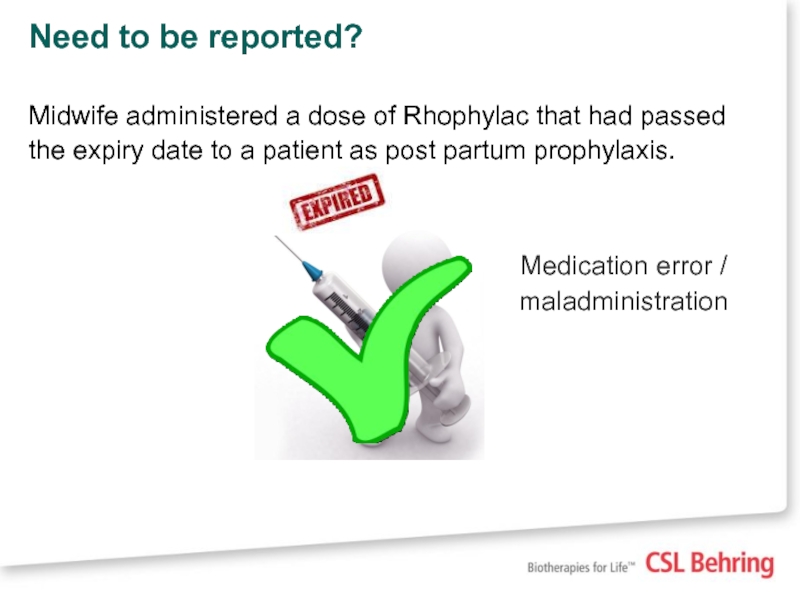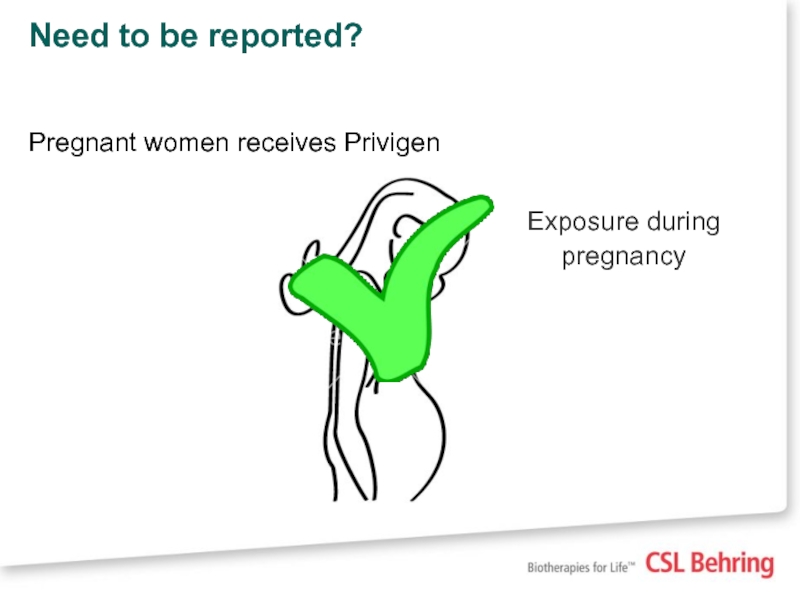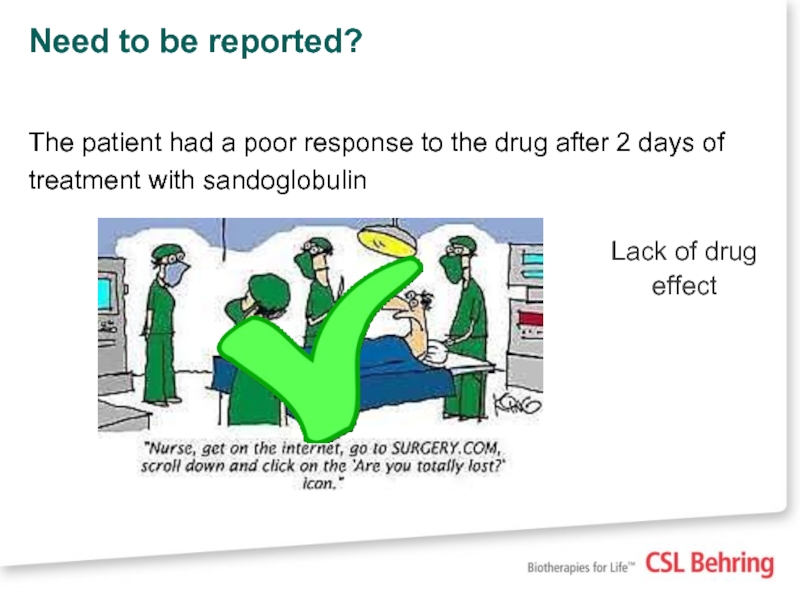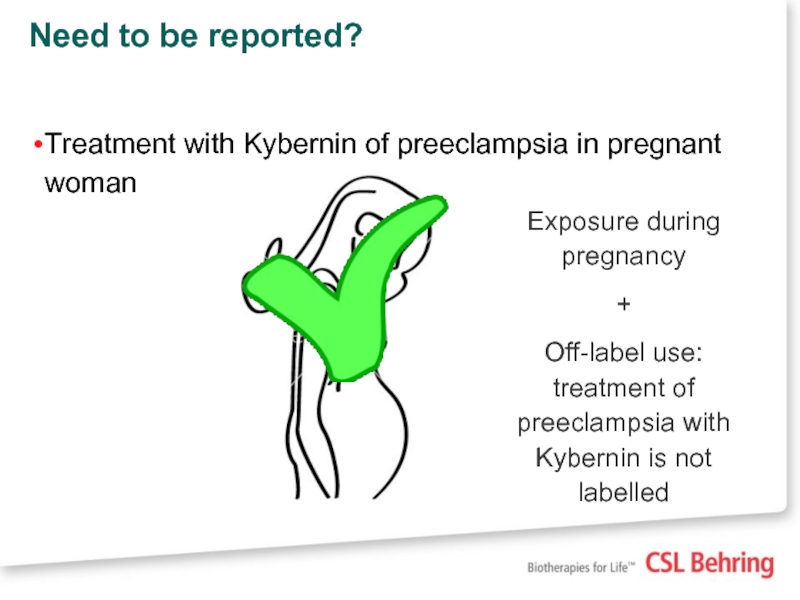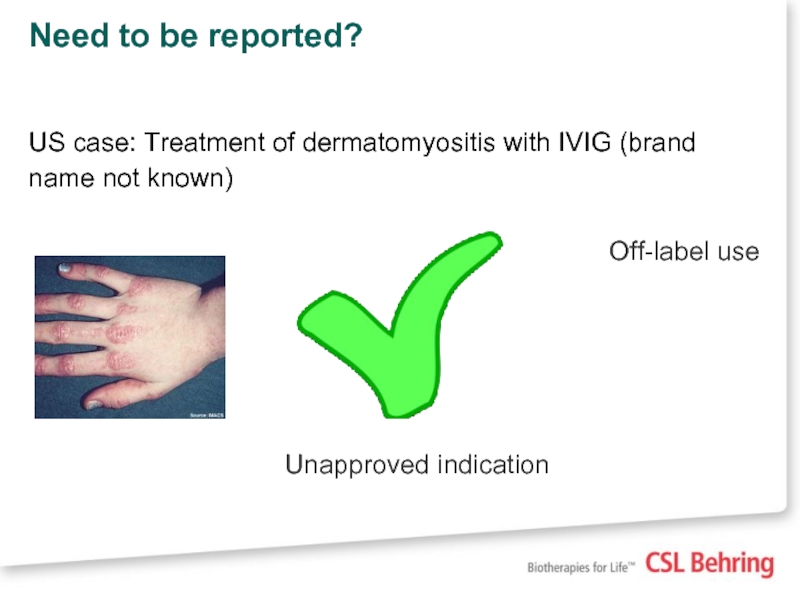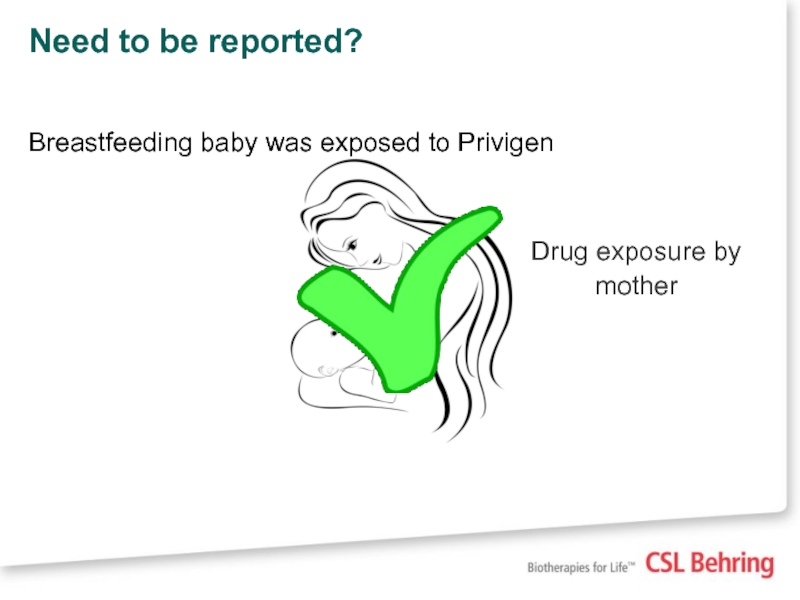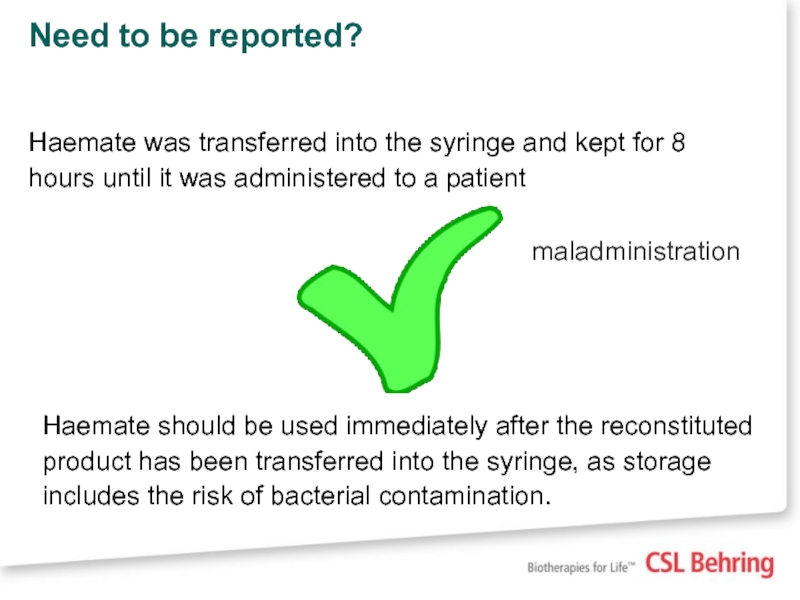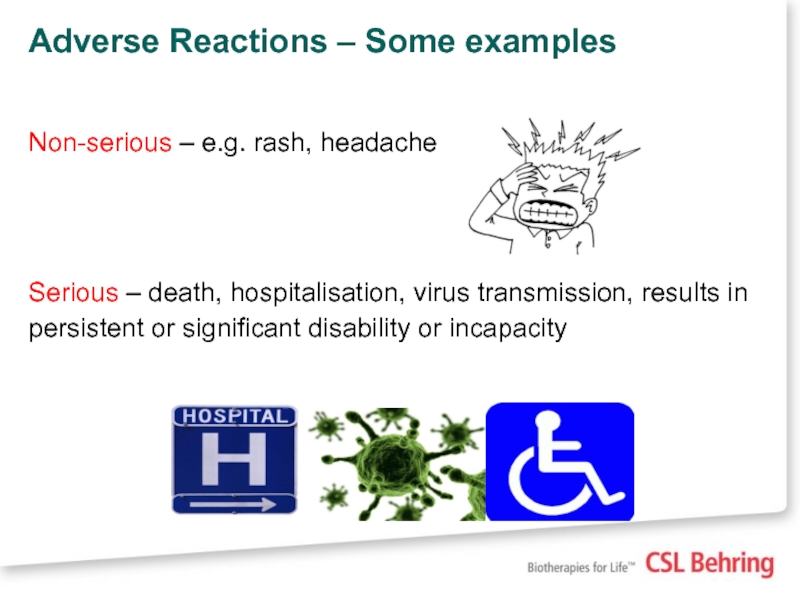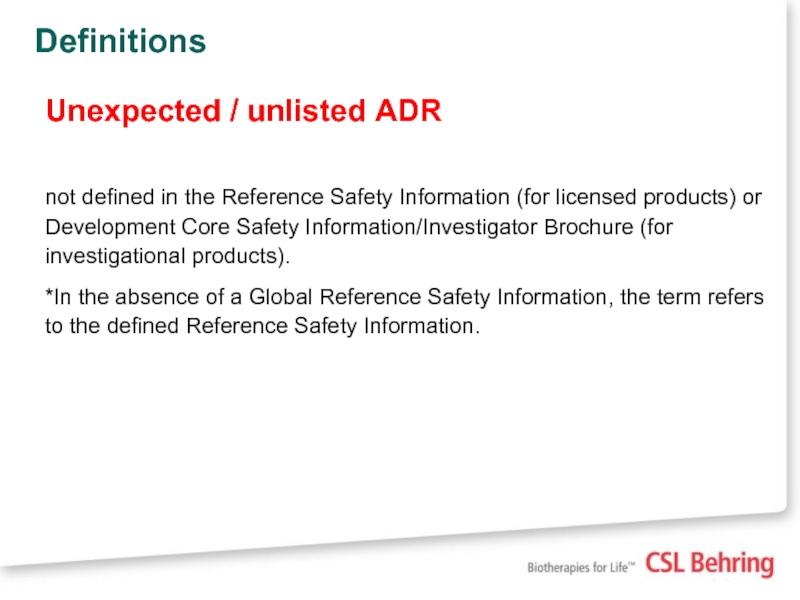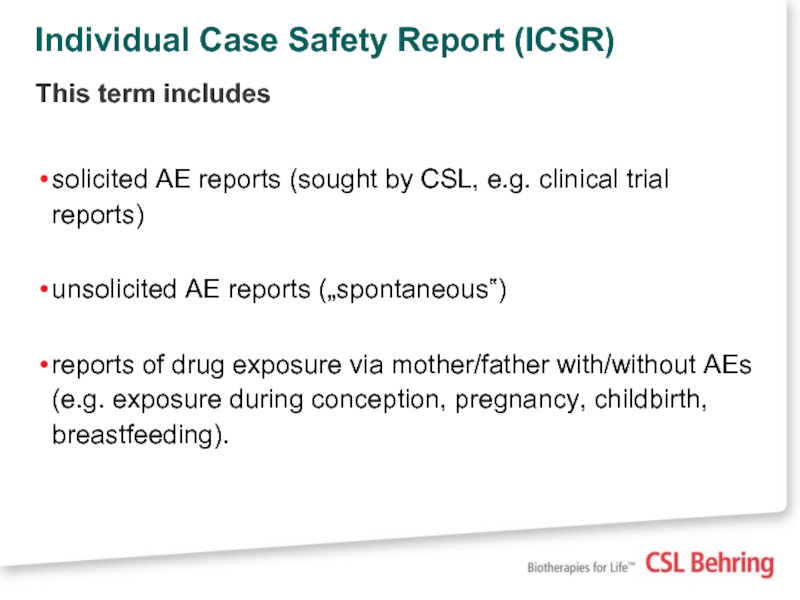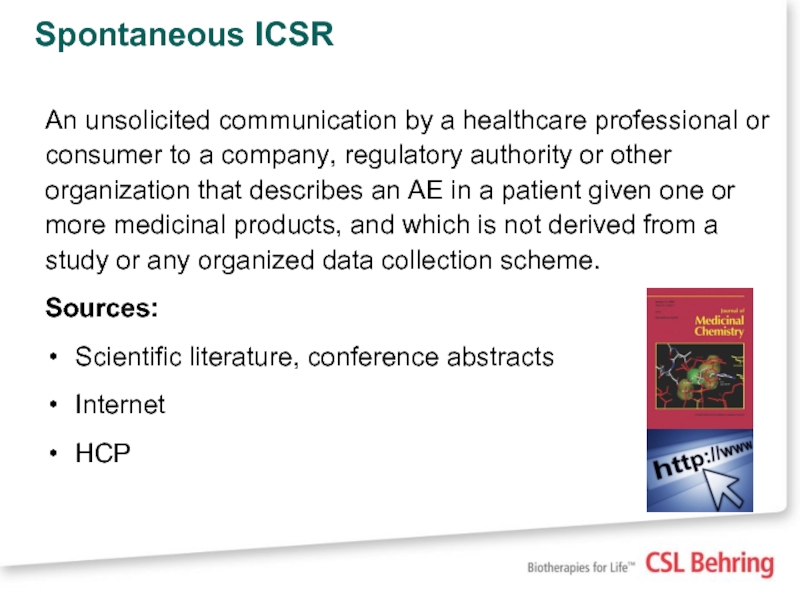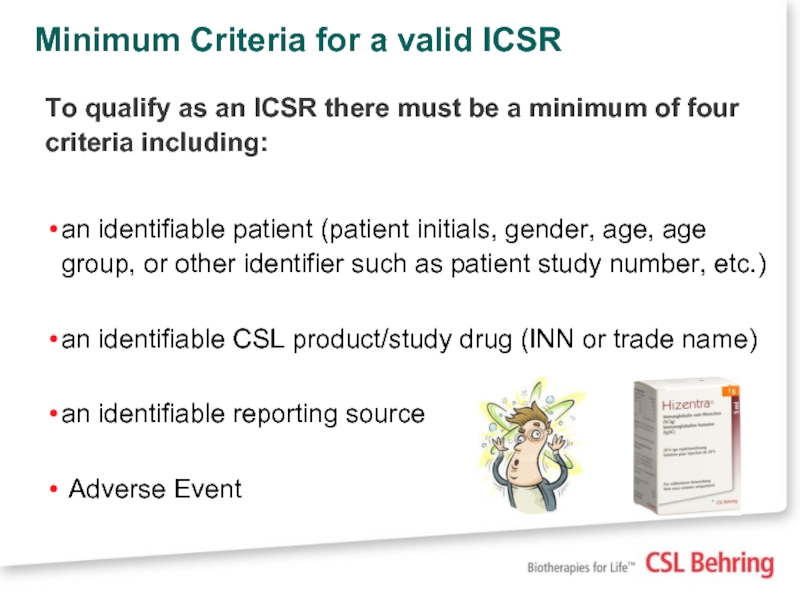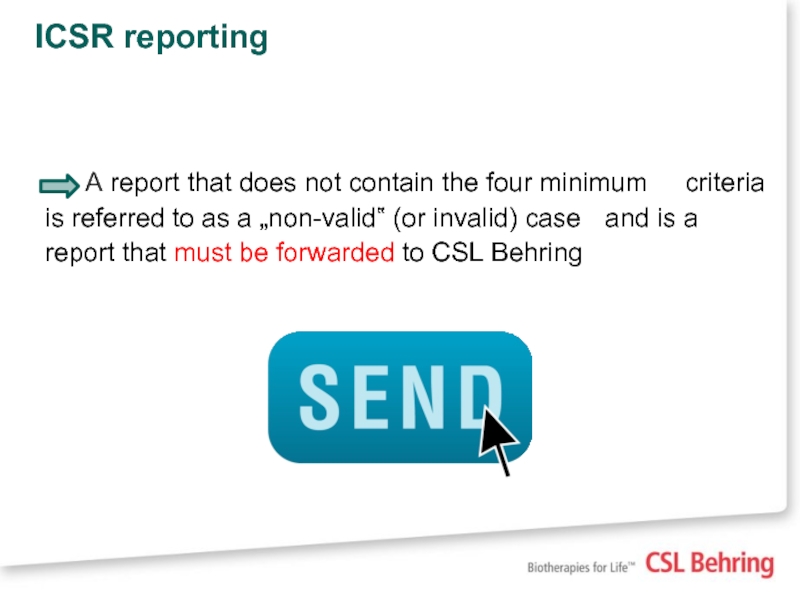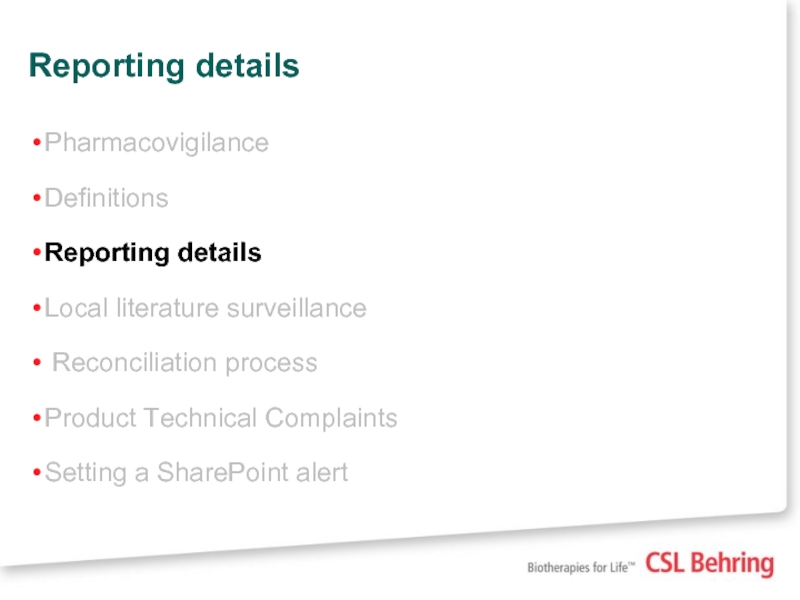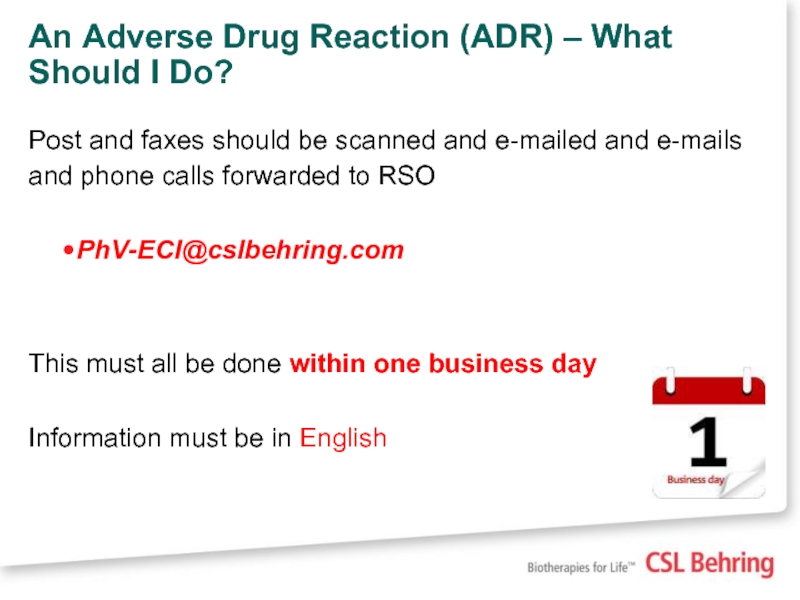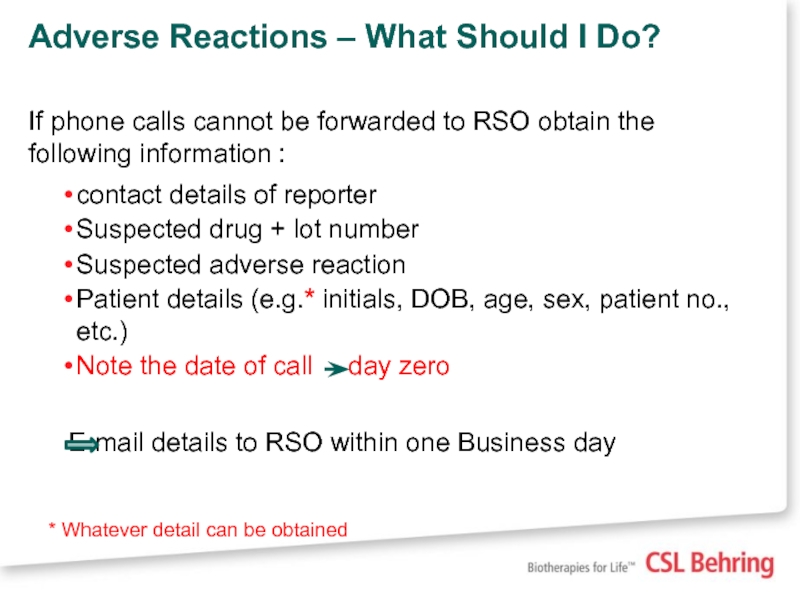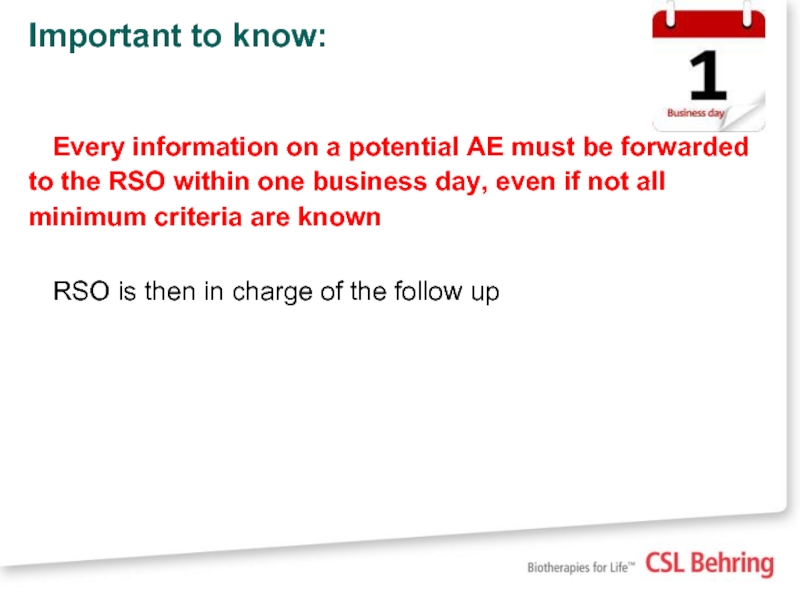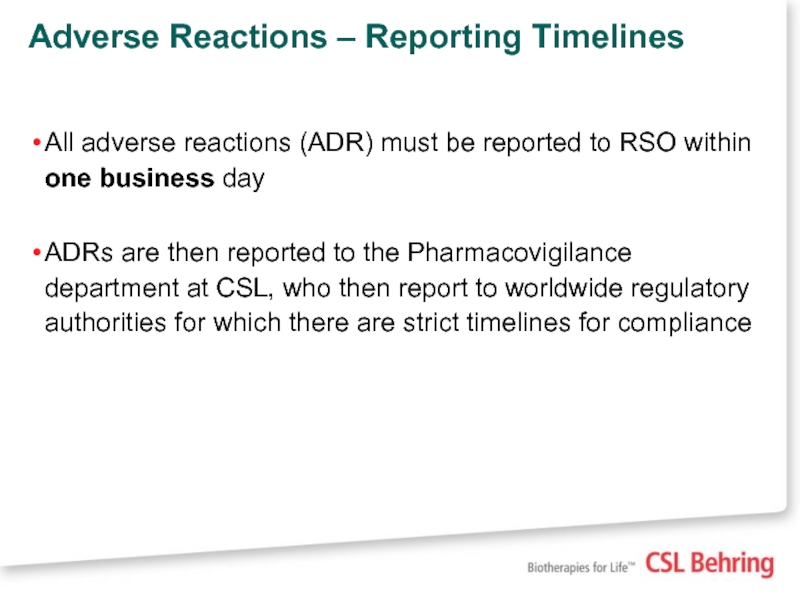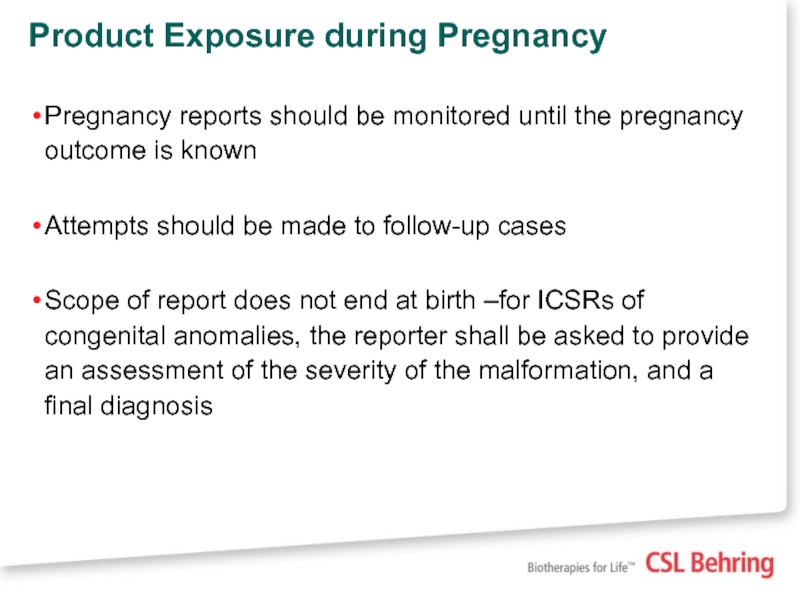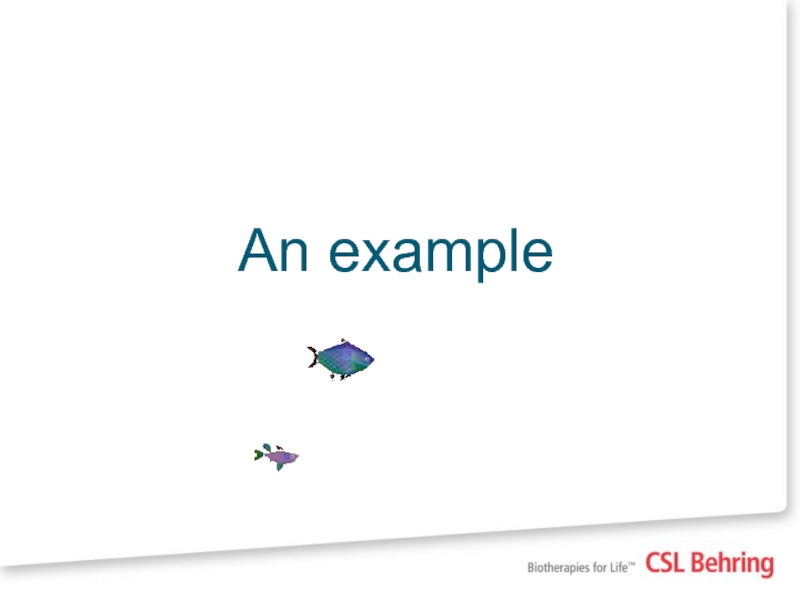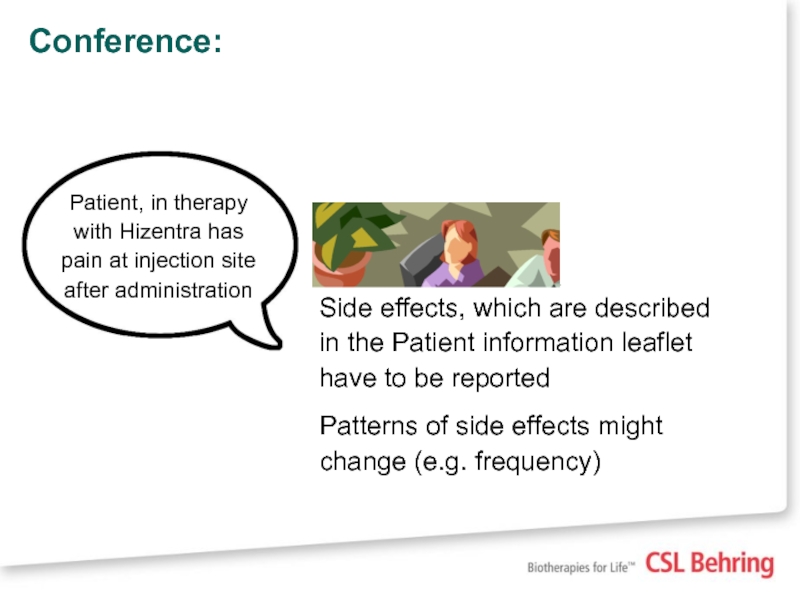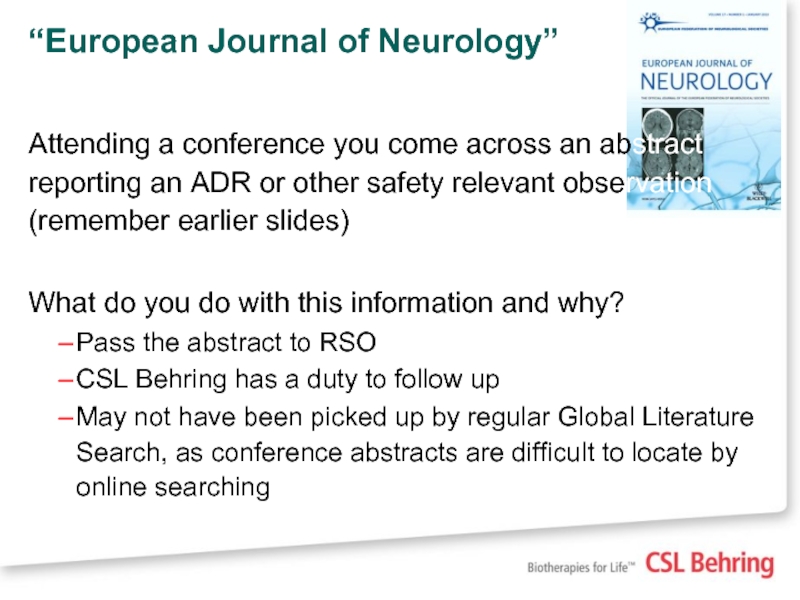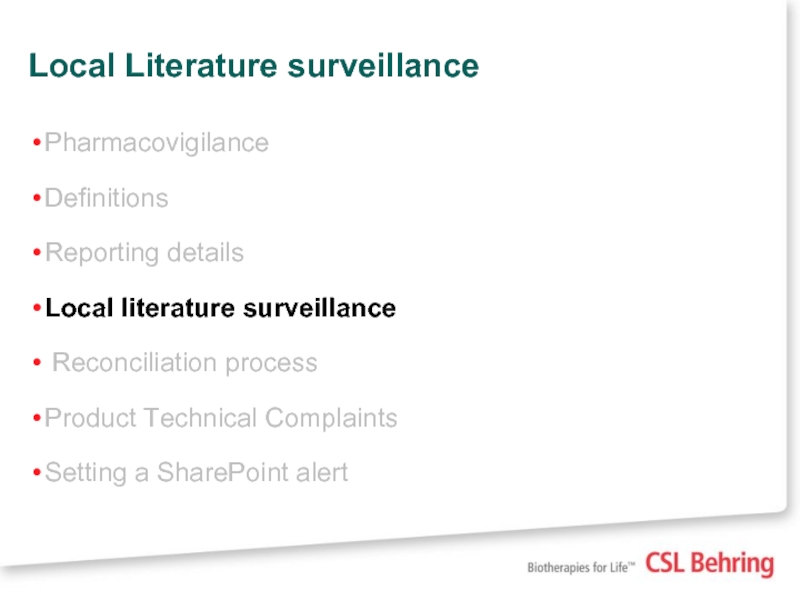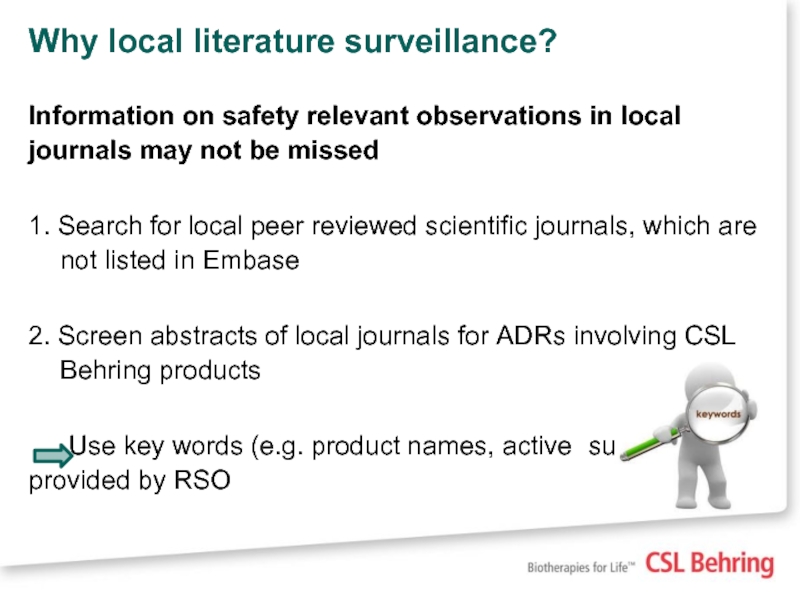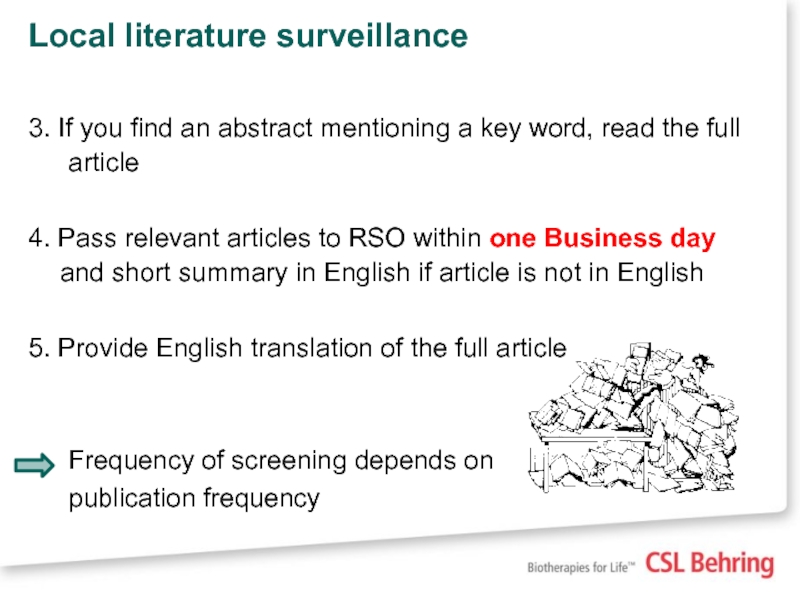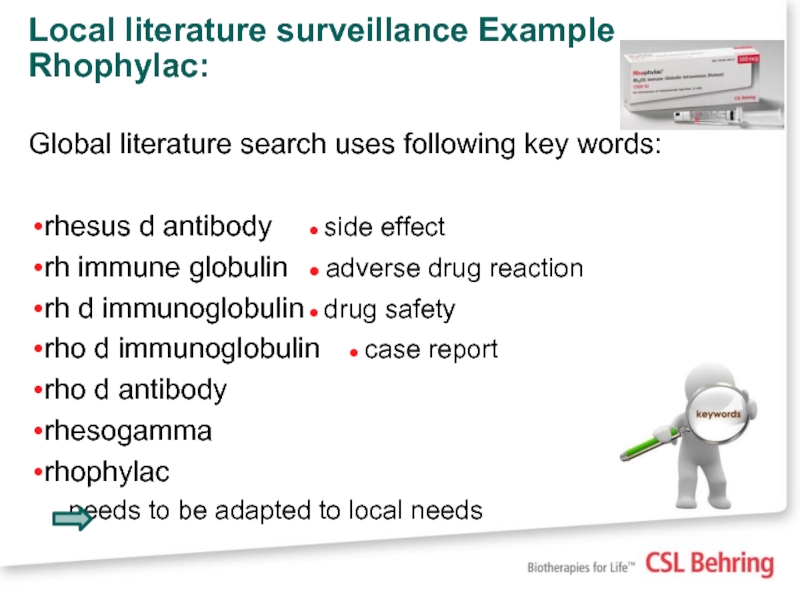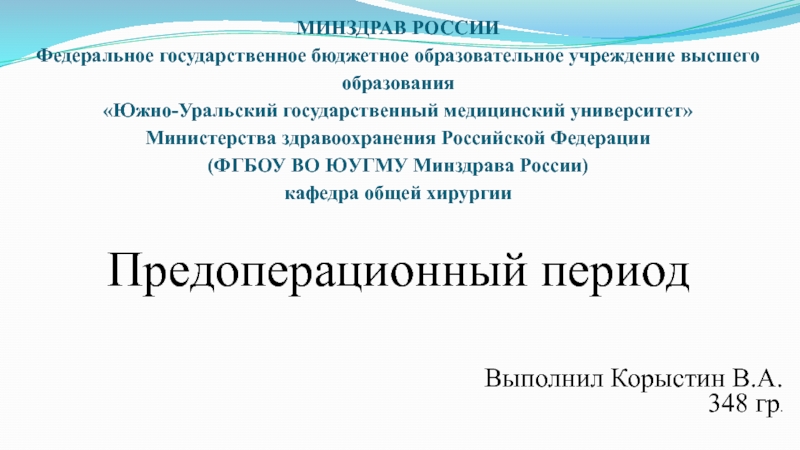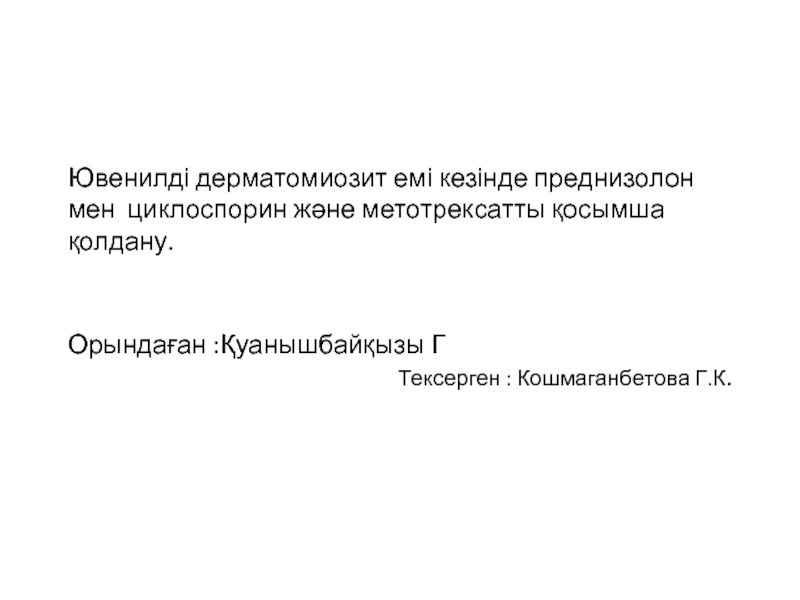- Главная
- Разное
- Дизайн
- Бизнес и предпринимательство
- Аналитика
- Образование
- Развлечения
- Красота и здоровье
- Финансы
- Государство
- Путешествия
- Спорт
- Недвижимость
- Армия
- Графика
- Культурология
- Еда и кулинария
- Лингвистика
- Английский язык
- Астрономия
- Алгебра
- Биология
- География
- Детские презентации
- Информатика
- История
- Литература
- Маркетинг
- Математика
- Медицина
- Менеджмент
- Музыка
- МХК
- Немецкий язык
- ОБЖ
- Обществознание
- Окружающий мир
- Педагогика
- Русский язык
- Технология
- Физика
- Философия
- Химия
- Шаблоны, картинки для презентаций
- Экология
- Экономика
- Юриспруденция
Pharmacovigilance. Marta D. Puente Navazo January 2017 презентация
Содержание
- 1. Pharmacovigilance. Marta D. Puente Navazo January 2017
- 2. Agenda Pharmacovigilance Definitions Reporting details Local literature surveillance
- 3. Pharmacovigilance Pharmacovigilance Definitions Reporting details
- 4. Why is Pharmacovigilance important? To identify: Risks
- 5. Why is Pharmacovigilance important?
- 6. Definitions Pharmacovigilance Definitions Reporting details
- 7. Definitions: Adverse Drug Reaction (ADR) A
- 8. Definitions- Adverse Event or Adverse Experience (AE)
- 9. Definitions – Adverse Event Report In
- 10. Additional guidance on medication errors
- 11. Potential and Intercepted Medication Errors Potential medication
- 12. MEs without ADRs “It is good practice
- 13. Examples received at CSL Behring 1/ Potential
- 14. EXAMPLES
- 15. Need to be reported? Midwife administered
- 16. Need to be reported? Pregnant women receives Privigen Exposure during pregnancy
- 17. Need to be reported? The patient had
- 18. Need to be reported? Treatment with Kybernin
- 19. Need to be reported? US case: Treatment
- 20. Need to be reported? Breastfeeding baby was exposed to Privigen Drug exposure by mother
- 21. Need to be reported? Haemate was transferred
- 22. Adverse Reactions – Some examples Non-serious –
- 23. Definitions Unexpected / unlisted ADR not
- 24. Individual Case Safety Report (ICSR) This term
- 25. Spontaneous ICSR An unsolicited communication by a
- 26. Minimum Criteria for a valid ICSR To
- 27. ICSR reporting A report
- 28. Reporting details Pharmacovigilance Definitions Reporting
- 29. Pharmacovigilance – LSO/RSO Contacts Regional
- 30. An Adverse Drug Reaction (ADR) – What
- 31. Adverse Reactions – What Should I Do?
- 32. Important to know: Every information
- 33. Adverse Reactions – Reporting Timelines All
- 34. Product Exposure during Pregnancy Pregnancy reports should
- 35. An example
- 36. If you suspect an ADR…
- 37. Conference: Side effects, which are described in
- 38. “European Journal of Neurology” Attending a conference
- 39. Local Literature surveillance Pharmacovigilance Definitions
- 40. Why local literature surveillance? Information on
- 41. Local literature surveillance 3. If you find
- 42. Local literature surveillance Example Rhophylac: Global
Слайд 3Pharmacovigilance
Pharmacovigilance
Definitions
Reporting details
Local literature surveillance
Слайд 4Why is Pharmacovigilance important?
To identify:
Risks and benefits of medicines to improve
Changes in the patterns of adverse effects (frequency, severity)
Pharmacovigilance is a legal obligation for all MAH’s and is subject to strict requirements under national and regional legislation.
Please let us know as soon as you become aware (within one working day) of new pharmacovigilance requirements in your country!
If we become aware of any pharmacovigilance requirements changes in your country, we will let you know and you should take action immediately.
Слайд 5Why is Pharmacovigilance important?
CSL has a regulatory requirement to provide an
Слайд 7Definitions: Adverse Drug Reaction (ADR)
A response to a medicinal product
Слайд 8Definitions- Adverse Event or Adverse Experience (AE)
Is any untoward medical occurrence
Please inform CSL as soon as you become aware of an Adverse Event
Слайд 9Definitions – Adverse Event Report
In addition to Adverse events, the
reports of drug exposure via mother (e.g. exposure during
pregnancy, breastfeeding)
lack of drug effect
medication errors/maladministration (including wrong route or unknown route of administrations)
overdose (accidental or intentional)
off-label use
drug abuse, Drug misuse, drug dependency
occupational exposure
pre-existing condition improved (unexpected therapeutic benefits were observed)
Слайд 10Additional guidance on medication errors
Good practice guide on recording,
From EMA (PRAC)
V1 effective from 27 Nov 2015
Слайд 11Potential and Intercepted Medication Errors
Potential medication error:
Already a circumstance that may
Intercepted medication error (‘near miss’):
Even if the error does not make its way to the patient, it is an issue (to be processed)!
Слайд 12MEs without ADRs
“It is good practice to also record cases of
“In line with the ICH E2C (R2) guideline and GVP Module VII.B.5.9 on PSURs, marketing authorisation holders should summarise relevant information on patterns of medication errors and potential medication errors, even when not associated with adverse outcomes, …”
Слайд 13Examples received at CSL Behring
1/ Potential ME with the look alike
2/ Potential medication error: different gynaecologists complain about the instructions of dose calculation in the SmPC of Rhophylac which already caused an intercepted ME (-> almost double dose administered)
3/ Intercepted ME: The patient was prescribed treatment with AlbuRx 25%. The pharmacist reported that due to the similarity of packaging of Albumin 25% (50 ml and 100ml ) vials, this led to dispensing incorrect product. This was a near miss event caught before incorrect volume was given to patient.
4/ ME: administration of expired Rophylac
Слайд 15Need to be reported?
Midwife administered a dose of Rhophylac that had
Medication error / maladministration
Слайд 17Need to be reported?
The patient had a poor response to the
treatment with sandoglobulin
Lack of drug effect
Слайд 18Need to be reported?
Treatment with Kybernin of preeclampsia in pregnant woman
Exposure
+
Off-label use: treatment of preeclampsia with Kybernin is not labelled
Слайд 19Need to be reported?
US case: Treatment of dermatomyositis with IVIG (brand
Off-label use
Unapproved indication
Слайд 21Need to be reported?
Haemate was transferred into the syringe and kept
Haemate should be used immediately after the reconstituted product has been transferred into the syringe, as storage includes the risk of bacterial contamination.
maladministration
Слайд 22Adverse Reactions – Some examples
Non-serious – e.g. rash, headache
Serious – death,
Слайд 23Definitions
Unexpected / unlisted ADR
not defined in the Reference Safety Information (for
*In the absence of a Global Reference Safety Information, the term refers to the defined Reference Safety Information.
Слайд 24Individual Case Safety Report (ICSR)
This term includes
solicited AE reports (sought by
unsolicited AE reports („spontaneous‟)
reports of drug exposure via mother/father with/without AEs (e.g. exposure during conception, pregnancy, childbirth, breastfeeding).
Слайд 25Spontaneous ICSR
An unsolicited communication by a healthcare professional or consumer to
Sources:
Scientific literature, conference abstracts
Internet
HCP
Слайд 26Minimum Criteria for a valid ICSR
To qualify as an ICSR there
an identifiable patient (patient initials, gender, age, age group, or other identifier such as patient study number, etc.)
an identifiable CSL product/study drug (INN or trade name)
an identifiable reporting source
Adverse Event
Слайд 27ICSR reporting
A report that does not contain the four minimum
Слайд 28Reporting details
Pharmacovigilance
Definitions
Reporting details
Local literature surveillance
Reconciliation process
Product
Setting a SharePoint alert
Слайд 29Pharmacovigilance – LSO/RSO Contacts
Regional Safety Officer (RSO) ECI:
Marta D. Puente
Local Safety Officer Russia:
Olga Kalinina (olga.kalinina@cslbehring.com)
Please send any information to our PV e-mail address:
PhV-ECI@cslbehring.com
Слайд 30An Adverse Drug Reaction (ADR) – What Should I Do?
Post and
PhV-ECI@cslbehring.com
This must all be done within one business day
Information must be in English
Слайд 31Adverse Reactions – What Should I Do?
If phone calls cannot be
contact details of reporter
Suspected drug + lot number
Suspected adverse reaction
Patient details (e.g.* initials, DOB, age, sex, patient no., etc.)
Note the date of call day zero
E-mail details to RSO within one Business day
* Whatever detail can be obtained
Слайд 32Important to know:
Every information on a potential AE must be
RSO is then in charge of the follow up
Слайд 33Adverse Reactions – Reporting Timelines
All adverse reactions (ADR) must be reported
ADRs are then reported to the Pharmacovigilance department at CSL, who then report to worldwide regulatory authorities for which there are strict timelines for compliance
Слайд 34Product Exposure during Pregnancy
Pregnancy reports should be monitored until the pregnancy
Attempts should be made to follow-up cases
Scope of report does not end at birth –for ICSRs of congenital anomalies, the reporter shall be asked to provide an assessment of the severity of the malformation, and a final diagnosis
Слайд 37Conference:
Side effects, which are described in the Patient information leaflet have
Patterns of side effects might change (e.g. frequency)
Слайд 38“European Journal of Neurology”
Attending a conference you come across an abstract
What do you do with this information and why?
Pass the abstract to RSO
CSL Behring has a duty to follow up
May not have been picked up by regular Global Literature Search, as conference abstracts are difficult to locate by online searching
Слайд 39Local Literature surveillance
Pharmacovigilance
Definitions
Reporting details
Local literature surveillance
Reconciliation process
Product Technical Complaints
Setting a SharePoint alert
Слайд 40Why local literature surveillance?
Information on safety relevant observations in local
1. Search for local peer reviewed scientific journals, which are not listed in Embase
2. Screen abstracts of local journals for ADRs involving CSL Behring products
Use key words (e.g. product names, active substances,) provided by RSO
Слайд 41Local literature surveillance
3. If you find an abstract mentioning a key
4. Pass relevant articles to RSO within one Business day and short summary in English if article is not in English
5. Provide English translation of the full article
Frequency of screening depends on
publication frequency
Слайд 42Local literature surveillance Example Rhophylac:
Global literature search uses following key words:
rhesus
rh immune globulin ● adverse drug reaction
rh d immunoglobulin ● drug safety
rho d immunoglobulin ● case report
rho d antibody
rhesogamma
rhophylac
needs to be adapted to local needs
